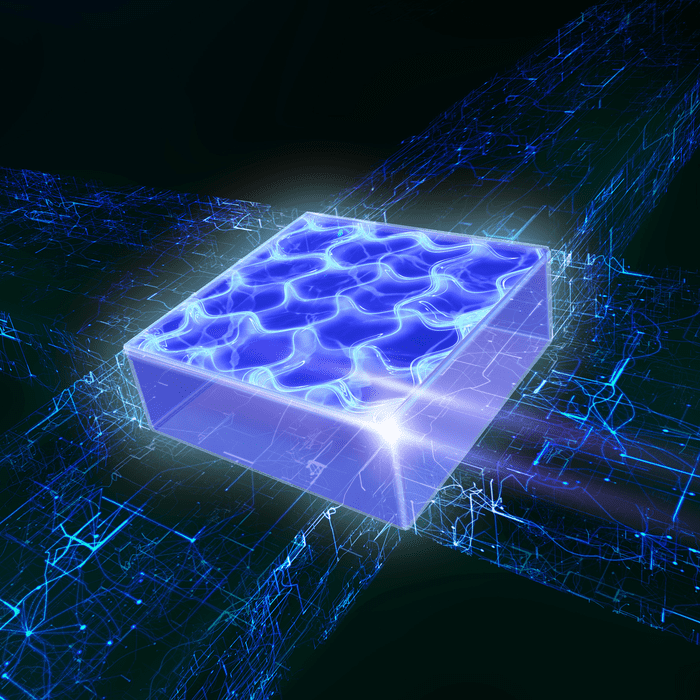
Almost 50 years since scientists imagined what supersolidity — a peculiar quantum state whereby atoms are arranged in a regular pattern but, at the same time, can flow frictionless — might look like, researchers have now demonstrated a two-dimensional supersolid quantum gas in the lab for the first time.
In a gas described by classical physics, you could theoretically label every single constituent atom of the gas and always know its position and momentum. However, you can never know this kind of information for each particle individually in a quantum gas.
At relatively high temperatures, the classical gas model is a good approximation for the behavior of the fluid. After all, engineers have been using classical physics equations for decades and our planes fly nicely and predictably, for instance. However, at very low temperatures approaching absolute zero, atoms and molecules slow to a crawl, and fluid behavior is more accurately described as a quantum gas — a behavior that can be quite challenging to wrap one’s head around.
For instance, at 0.000001 degrees above absolute zero, atoms become so densely packed they behave like one super atom, acting in unison. Atoms can form an exotic form of matter called Bose-Einstein condensate (BEC), also known as the fifth state of matter, in which individual atoms are completely delocalized. This means that the same atom exists at each point within the condensate at any given time, something that makes no sense from a classical physics perspective. It is what it is.
Quantum fluids like BECs tend to exhibit some “quantum” macroscopic behaviors such as superfluidity (fluid flow with zero viscosity) or superconductivity (electrical flow with zero resistance). Apparently, there’s also such a thing as supersolids, bizarre materials whose atoms are arranged in an orderly lattice but which, nevertheless, flow without friction.
In 2019, researchers led by Francesca Ferlaino, a physicist at the University of Innsbruck in Austra, demonstrated a supersolid state in an ultracold quantum gas of magnetic atoms for the first time. However, this effort could only attain supersolid states in a string of one-dimensional droplets. Now, the researchers have pushed the envelope by extending this phenomenon to two dimensions.
“Normally, you would think that each atom would be found in a specific droplet, with no way to get between them,” says Matthew Norcia of Francesca Ferlaino’s team.
“However, in the supersolid state, each particle is delocalized across all the droplets, existing simultaneously in each droplet. So basically, you have a system with a series of high-density regions (the droplets) that all share the same delocalized atoms.”
The 2-D crystal-like structure is locked in a rigid structure but also delocalized at the same time, a phenomenon that is made possible strong polarity of magnetic ultra-chilled atoms. In doing so, the physicists have created a solid structure with the properties of a superfluid.
Like any respectable quantum physics experiment, this research opens up more questions than it answers. For instance, it’s not clear if it’s possible to make supersolids at a larger scale.
The findings appeared in the journal Nature.





